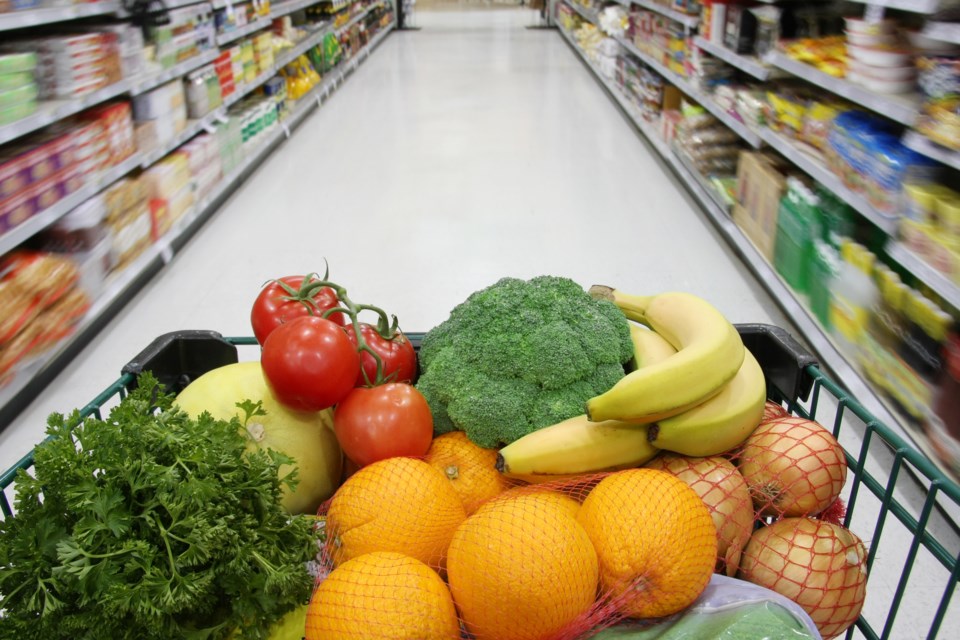"Hey, this honeydew melon is only $5.99—and it's huge!" I said to myself grabbing the biggest one in sight. One that also happened to have scabby scars all over its pretty green skin, so good chance no one would buy it and it would just end up at the local composting facility. (See "Fast food facts" below.)
Then I wondered, is that really a good price? A tough question to answer lately for a ton of reasons.
Inflation has boosted grocery prices nine per cent over the past year alone. The Competition Bureau has just released its report concluding there's so little competition amongst Canadian grocery stores, we shoppers are pretty much left in the lurch. Plus, no price tags on items since the chunk-a-chunk sound of stock boys manually pricing goods started fading from grocery store aisles 50 years ago, when retailers went for bar codes, means you can't recall how much that last bag of chips you dragged home cost because you don't see the price every time you handle it. All in, you have to be a wizard, or at least make a spreadsheet, to track your grocery buying power lately.
Factor in the pandemic-related supply chain disruptions that nuked our shopping habits—from the stores we frequented to the products we loved but couldn't find—and you're not the only shopper scratching their head over food prices. (To maybe feel better, check out the YouTube video of Bill Gates trying to guess grocery prices on Ellen DeGeneres' show a while back. At least you'll laugh.)
So what can we do to be savvy food shoppers and get the best bang for our bucks?
NO. 1: STOP WASTING FOOD!
The numbers vary, but no getting around it—we Canucks waste an embarrassing amount of food. So no matter how good a deal you think you're getting at the grocery store check-out, it all adds up to nada if you end up dumping perfectly good food down the drain, so to speak.
One UN report says the average Canadian wastes about 79 kilograms of food a year. In sub-Saharan Africa and South and Southeast Asia, that number is only about six to 11 kg.
Toronto determined the average single-family household there wastes some 200 kg a year. Meanwhile, Love Food Hate Waste, a website run by Metro Vancouver's National Zero Waste Council, says the average Canadian household wastes about 140 kg a year.
I won't even try to put a price on any of those figures because it will change by next week anyway. Let's just say that you know how much food you waste, from cooking too much, buying too much or just not storing it right. So start treating every food item you drag home, whether from garden or store, like the treasure it is.
I was a kid, probably watching my parents or grandparents in Edmonton working hard in their big gardens, when I first realized, holy cow! Look at all that work, all that precious water and stuff it takes! But mostly, look at how amazing those plants—and animals—are that "magically" make the food we eat.
You have to admit, whatever age you are, it is pretty amazing. After all that effort, the least we can do is use every last bit. So stop wasting food!
Love Food Hate Waste says that about two thirds of the food we throw out is actually edible. Eat those broccoli stems, and radish greens; even the green leaves on your head of cauliflower. They taste great! Plus they're good for your gut microbiome. Save your "pot liquor"—the water left from cooking pasta or veggies—and use it for soups or stir fries. It's delicious! Transform stale bread into cookies. The list goes on.
A quick search around the internet shows tons of ways to make your food bucks go further, including all those electronic coupons some people love.
Another big food waster is unrealistic expiry dates—but that's a topic for another time.
KNOW YOUR LIMIT—STAY WITHIN IT
It might be depressing, but it's still a good idea to understand the impacts of inflation on your buying power and budget. Anyone lucky enough to have some kind of regular income, whether from social assistance or a 9-to-5 job, can figure out your buying power today versus as far back as 1914 (!) with this inflation calculator from CUPE, which uses data from Statistics Canada's Consumer Price Index: cupe.ca/cpi-calculator. For instance, what cost $1,000 in 2018 will now cost you $1,168.15.
Another helpful tool I once benefitted from when a bar code price was wrong is the Scanner Price Accuracy Code. This voluntary regulation (meaning not all stores opt in) was implemented by the Retail Council of Canada to ensure accurately scanned prices for consumers. It means you might get your item for free if the check-out price is wrong, like I did.
In the end, it's like Francis Bacon said: knowledge is power. Today that's doubly true when you shop for anything, including knowing how much you'll really use and not dragging more home, even when it's "on sale."
FAST FOOD FACTS
• Since opening in 2008, the Whistler Compost Facility has added more than 100,000 yards of compost to the Sea to Sky corridor. Most of Whistler’s food waste goes to Sea to Sky Soils in Pemberton, which makes three different kinds of quality soil amenders you can buy at the Waste Transfer Station on Callaghan Road, south of Function Junction.
• In 2021 alone, Metro Vancouver generated about 140,000 tonnes of compost. From 2015—when food scraps were banned from garbage—until 2021, Metro Vancouverites saved about 1.1 million tonnes of greenhouse gases by putting their food waste into the compost stream. That’s like taking 250,000 cars off the road.
Glenda Bartosh is an award-winning journalist who reminds you to watch for your grocery rebate from the federal government in the mail. It should be about double your January 2023 GST/HST credit amount.




